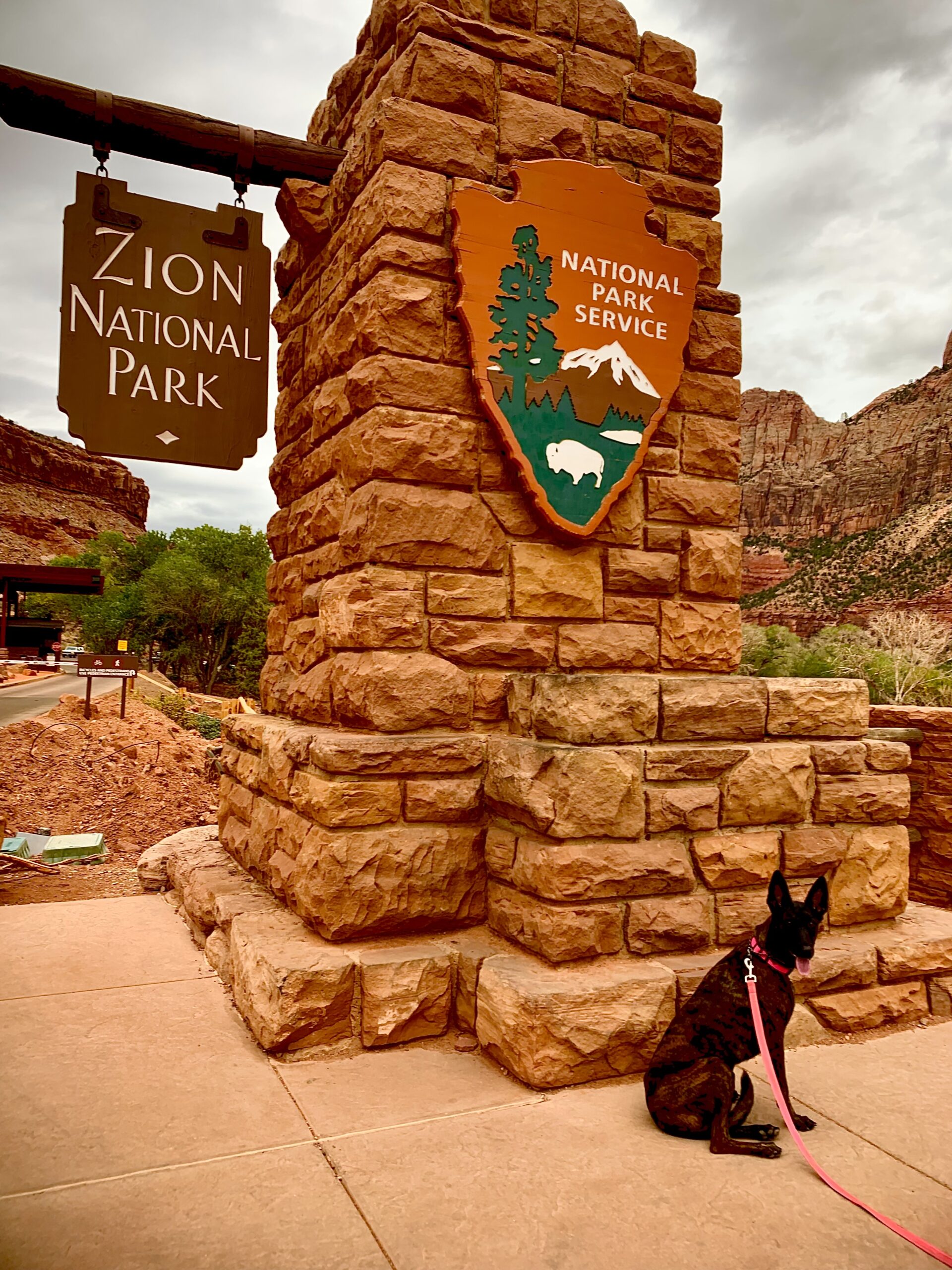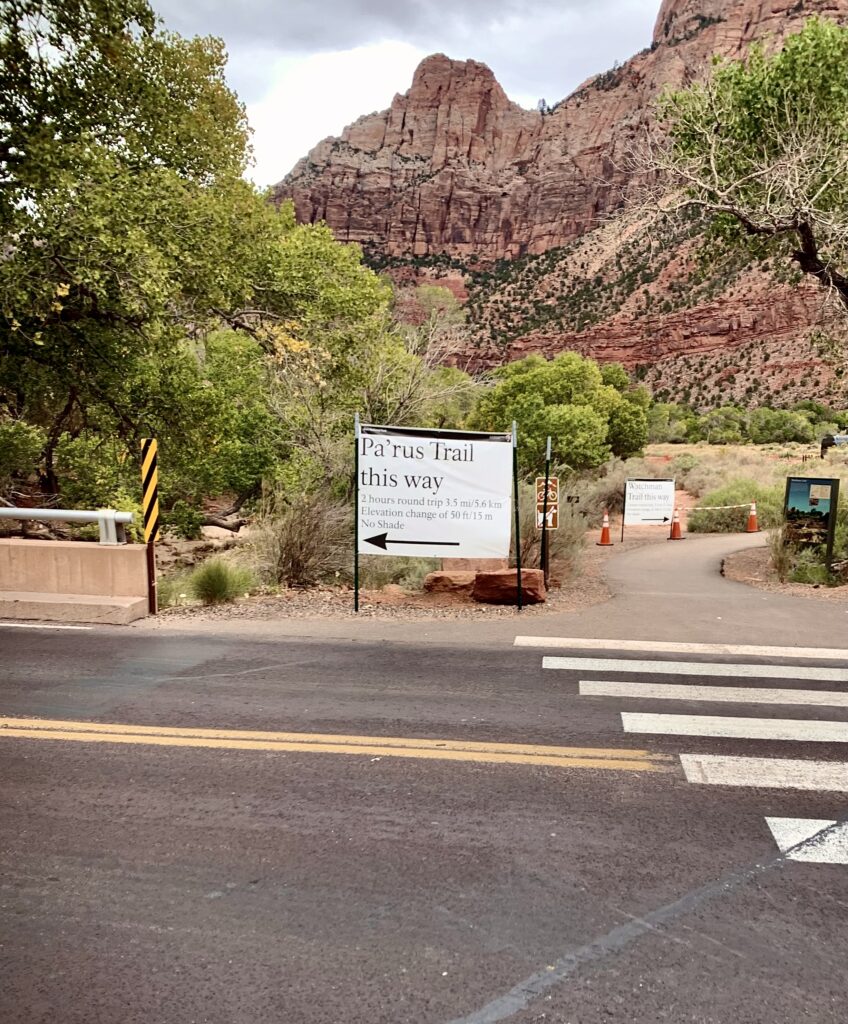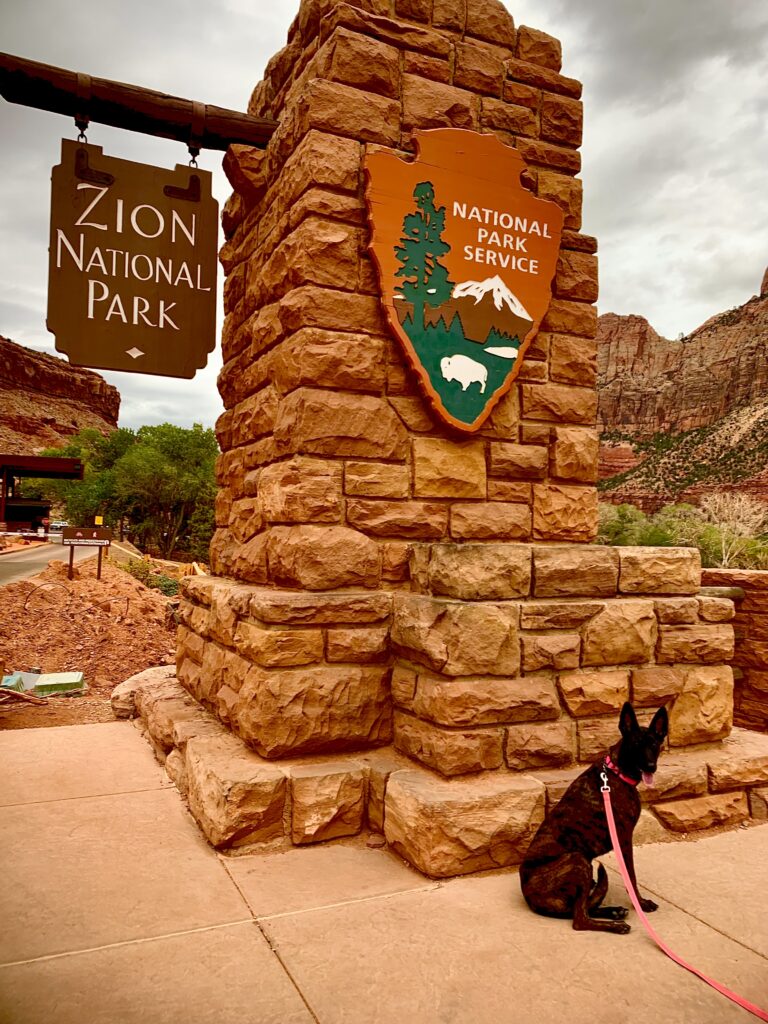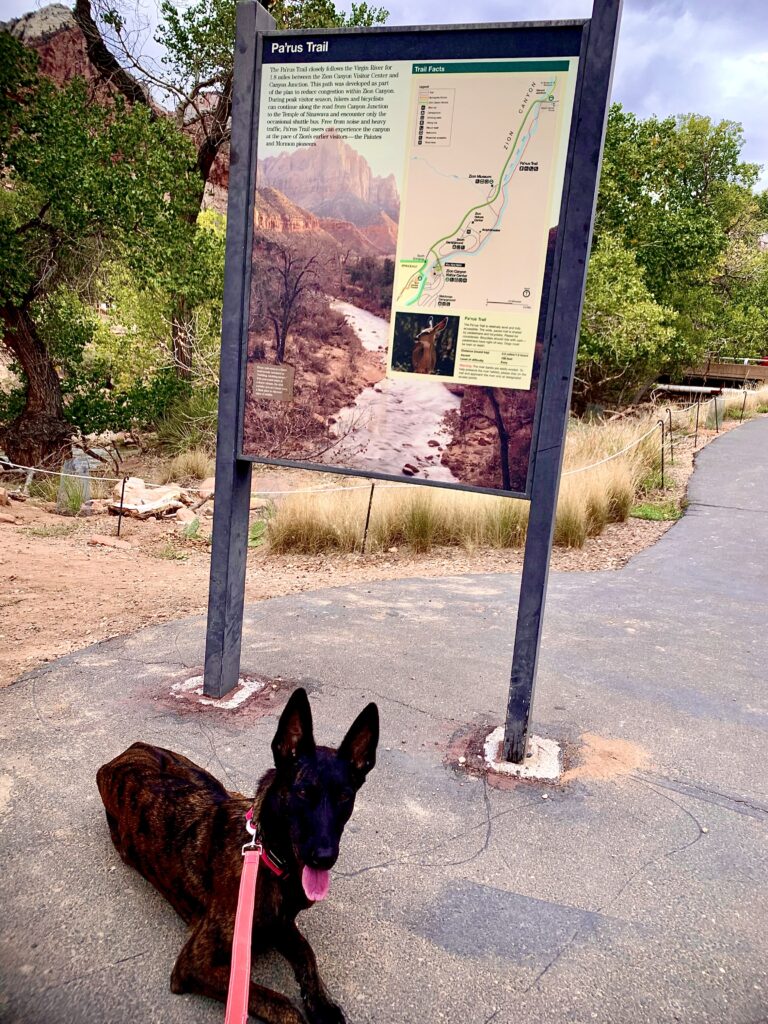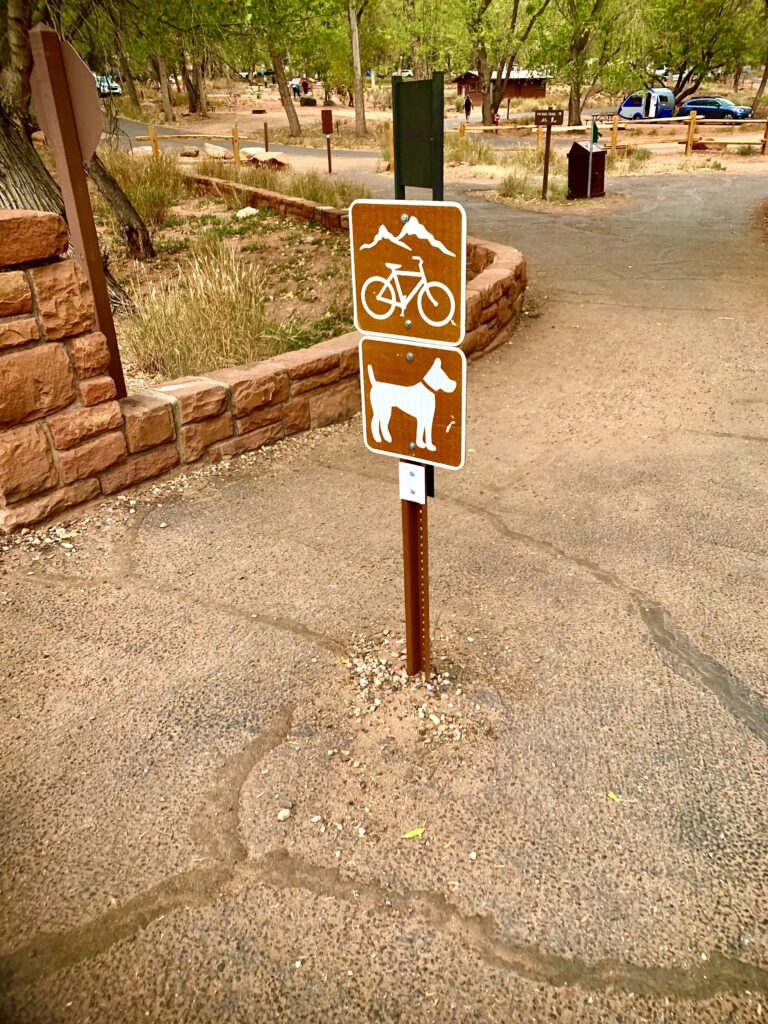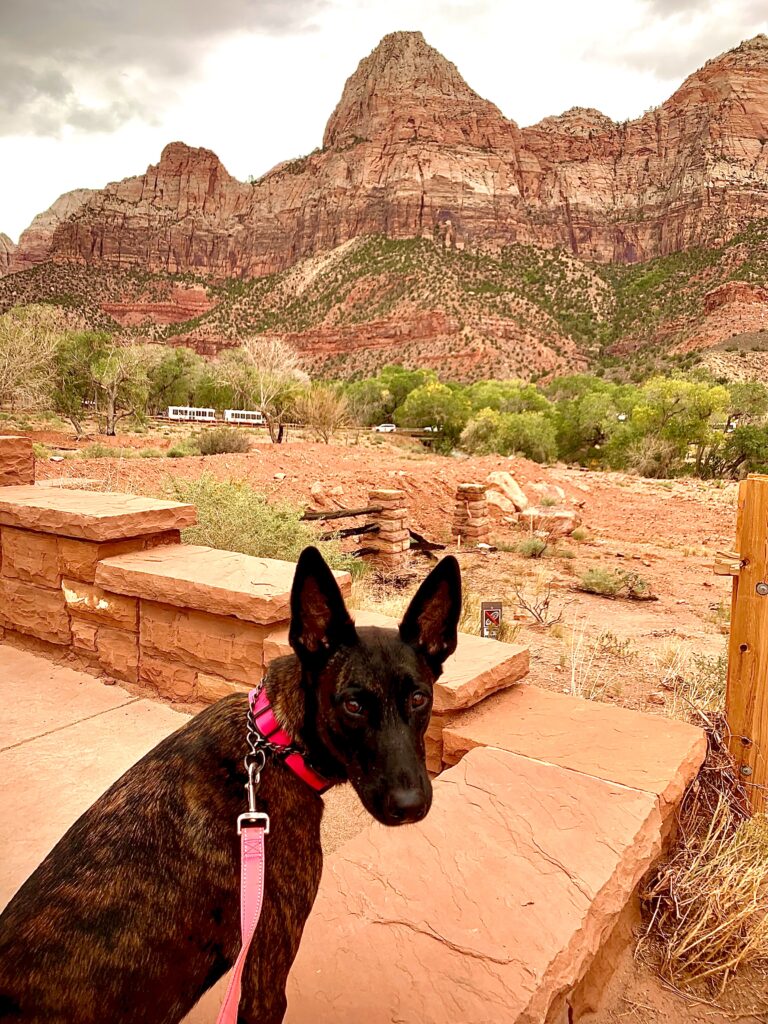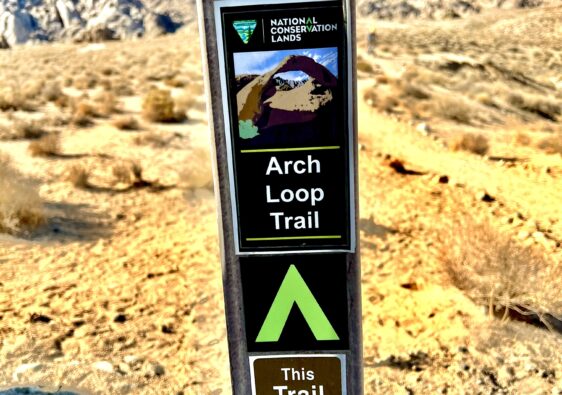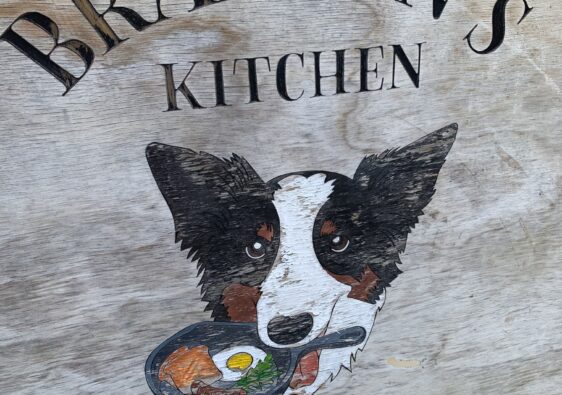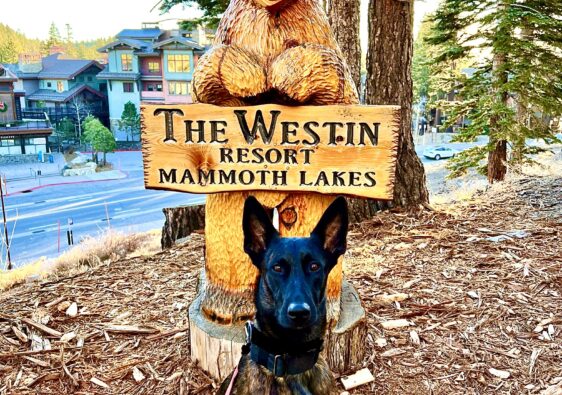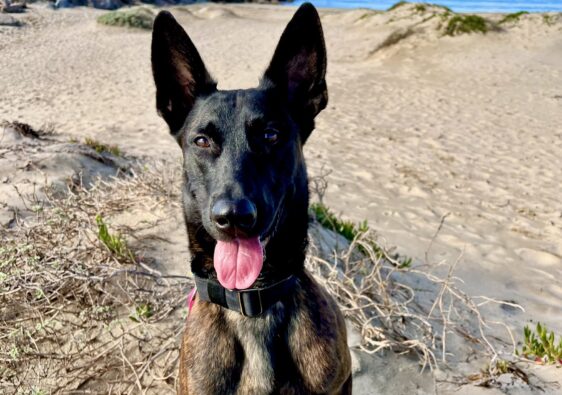This is article is being written in a five part series about our trip to Bryce Canyon and Zion National Parks. This article is Part Five in a five part series.
Zion National Park is a place of spectacular beauty. It is a park that gets very hot as well. Our suggestion is that fall travel would be best time to visit once it is safe to do so. Unfortunately at this time, a bacteria in the water at Zion National Park poses a serious life-threatening danger to your dog. It is our hope that our blog will simplify your travel plans with your dog. Therefore, we will always be honest about our experiences. Read this complete article to find out more. For reference, we took this trip in October 2021. A side note: This park was much more crowded than Bryce Canyon. We had to wait in a line to enter the park and most of the parking was already full.
Zion is just under an hour’s drive from Saint George. It is Utah’s first national park and has lots to see. We had wanted to visit Zion last year, but hearing about a Toxic Cyanobacteria that could kill dogs in less than 15 minutes stopped us in our tracks. We decided to try to visit the park this year. We thought that we would be able to avoid any bacteria that existed, and also hoped that the cooling weather may have caused the bacteria to disappear. We were wrong. Our side goal in visiting Zion was to look into seeing whether Zion’s B.A.R.K. Ranger program was up and running so that we could add another B.A.R.K. Ranger badge to our newly started collection for our dog. (We found out from the park ranger that they are currently working on their B.A.R.K. Ranger program and hope to have it up and going in the near future.)
Some more information to know before visiting Zion. When taking your dog to Zion, it is important to note that the only trail in the entire park that dogs are allowed on is the Pa’rus trail that runs along the Virgin River. This is something we knew before going. The Pa’rus trail is 3.5 miles and takes approximately 2+ hours to hike. It also offers no shade. In addition, you must also bring your own water to drink. These two things are not the biggest dangers, although they could certainly be an attractant to the real danger that exists at Zion. Read on to find out about the real danger.
Good news/Bad news! I must say that the thing that we found so wonderful at both Bryce Canyon and Zion National Parks were the interactions that we had with the park rangers. The park rangers were kind, knowledgable, and cared a lot about dogs. Knowing that we needed some more information before setting out to walk in the park, we headed to the visitor center to find out where the Pa’rus trail began, and to also get some updated information about their B.A.R.K. Ranger program. What happened next was a pleasant surprise. Before we had a chance to find a park ranger, they spotted us and called us over to talk to them. At first we thought we had done something wrong, but that was not the case. The park ranger saw our dog and wanted to let us know about the Toxic Cyanobacteria and the life-threatening danger it posed to our dog! The ranger let us know that they were monitoring Zion’s waterways daily and were still finding the bacteria in the water. In addition, the ranger sadly told us how she had witnessed dogs dying from coming in contact with the bacteria. Due to these incidences, the park rangers were stopping and talking with anyone that they say with a dog. They didn’t want to see any other dogs succumb to the same fate. The ranger informed us that the Virgin River that runs along the Pa’rus trail and it was currently testing positive for the Toxic Cyanobacteria The ranger also let us know that coming in contact with the water, including getting it on their fur, was not safe. The mere action of dogs licking the water off of their paws could lead to poisoning!
We were very grateful for the information and decided to just take a couple of pictures and leave. We wanted to avoid any danger that could come to our dog. The park ranger redirected us to areas in the town that we could take our dog to that would allow her to stretch her legs. We give the Zion Park rangers an A+ for their caring and helpful attitudes and information.
At this time, we are suggesting that if you want to visit Zion National Park, it is probably best to visit it without your dog until this Toxic Cyanobacteria disappears for good. We hope that you have found these articles helpful in your planning. Here are a couple of links to help you with your planning. Zion National Park , Toxic Cyanobacteria Bloom in the Virgin River and the Streams of Zion National Park , Pets at Zion National Park

